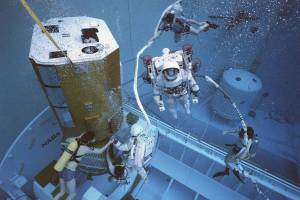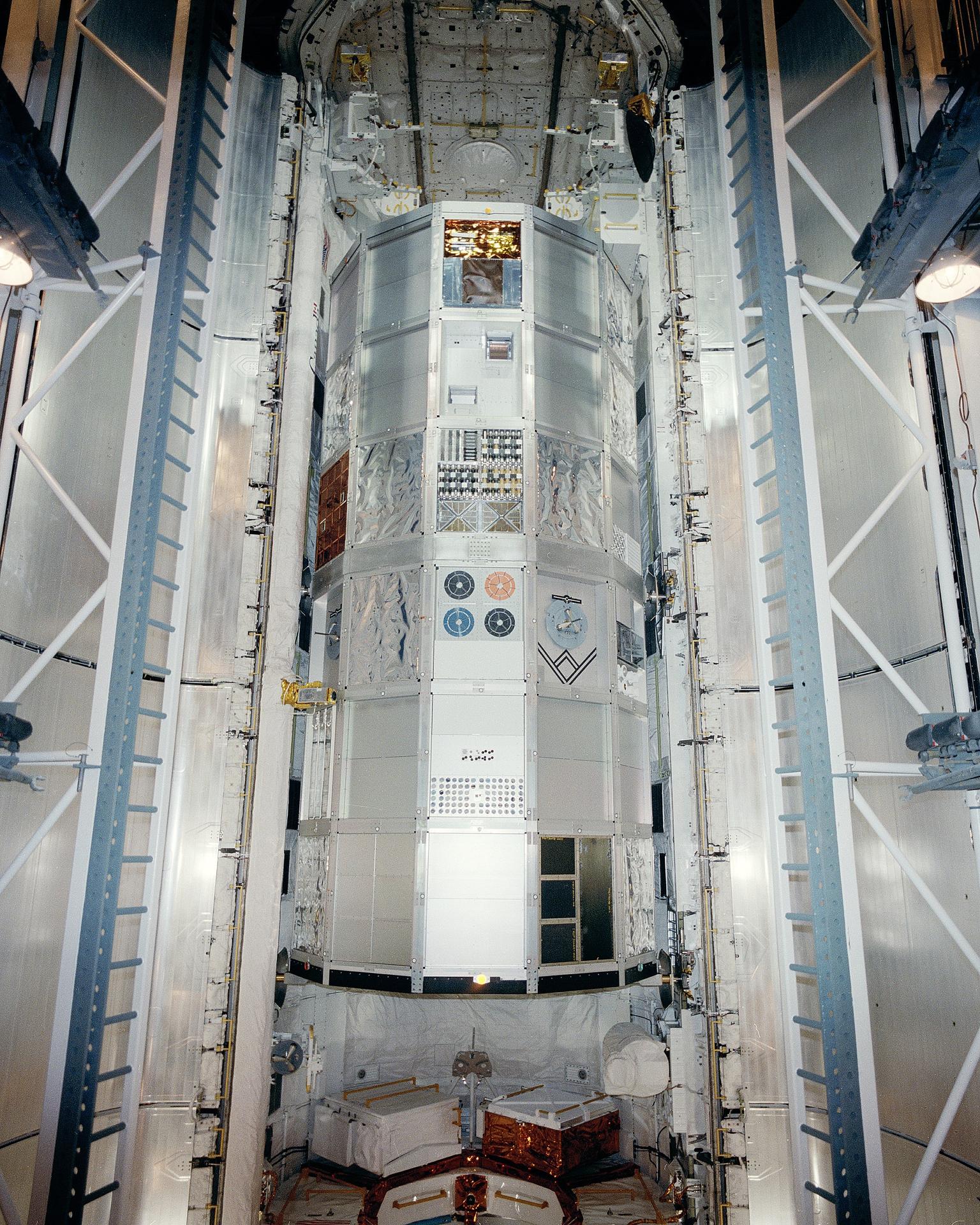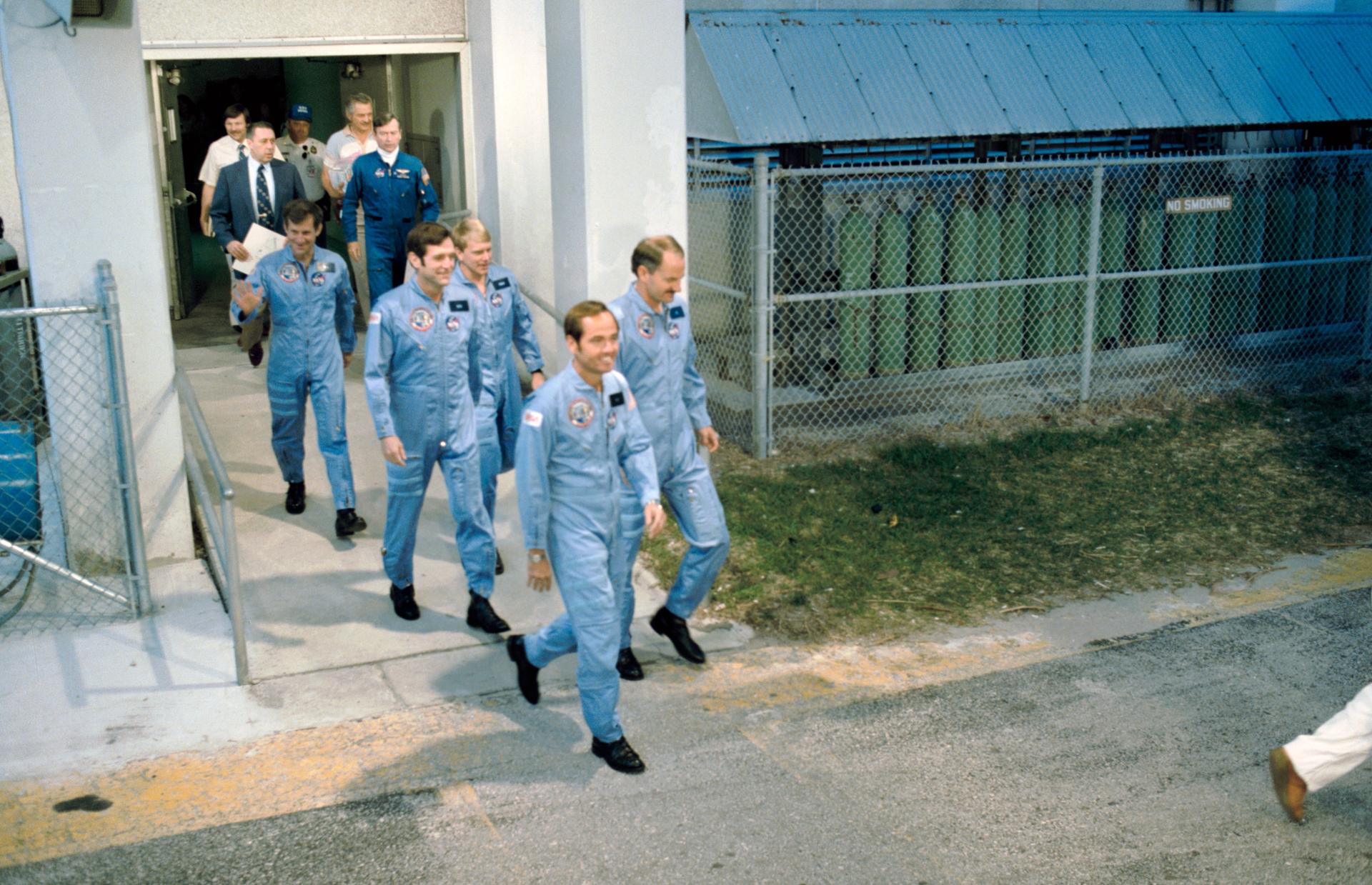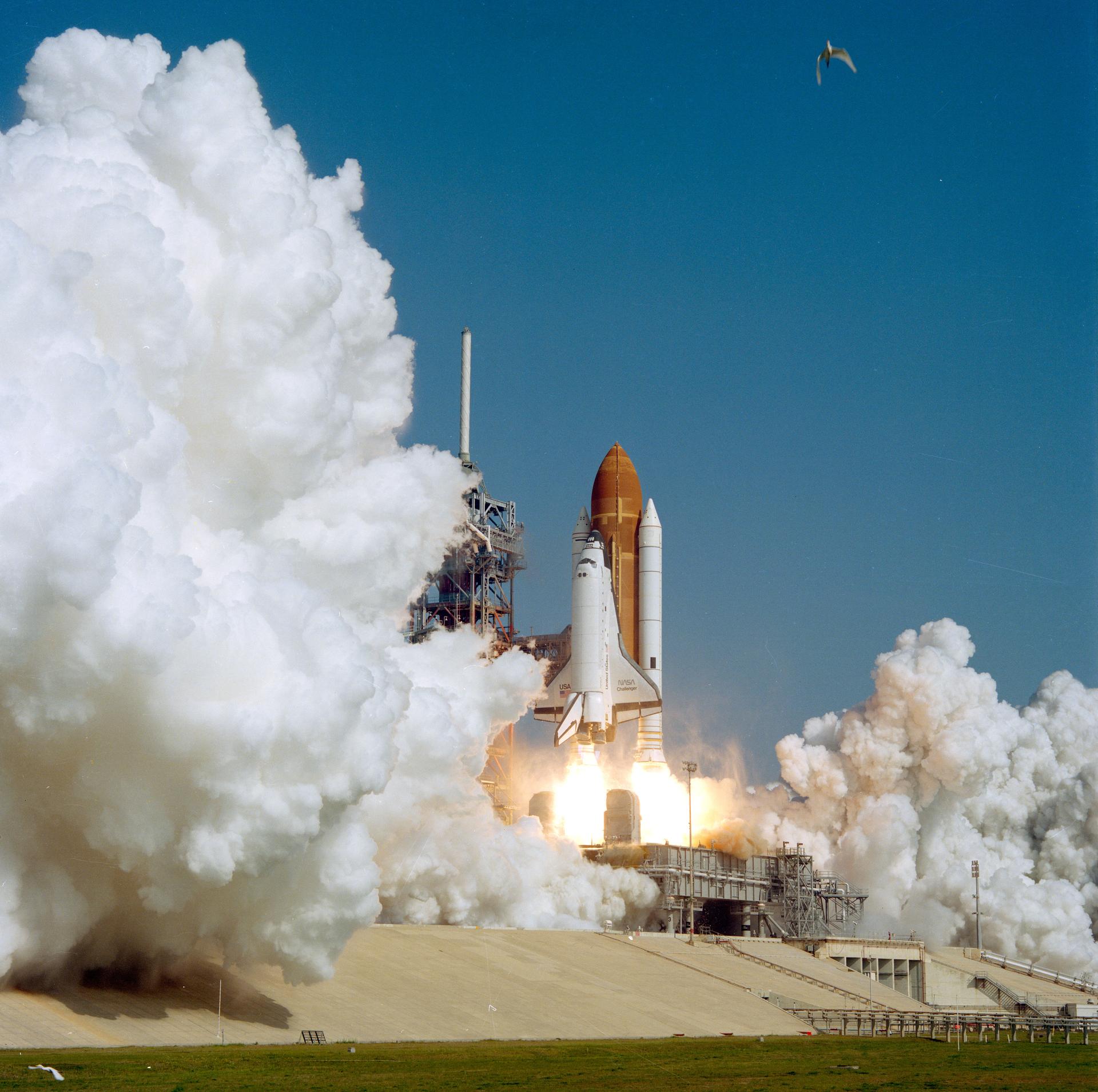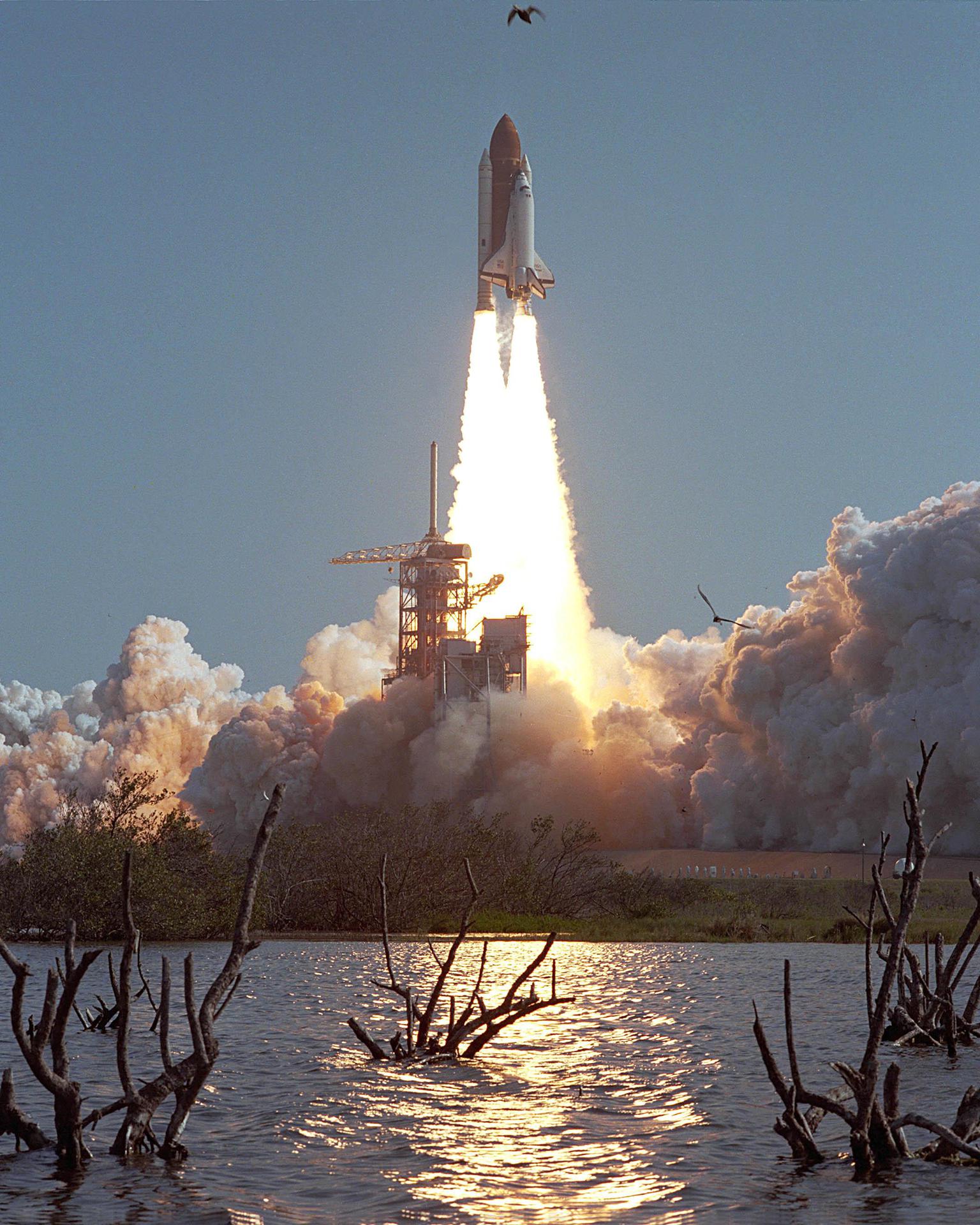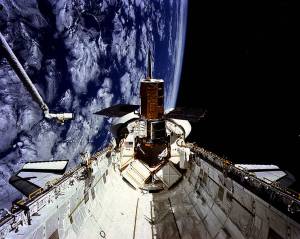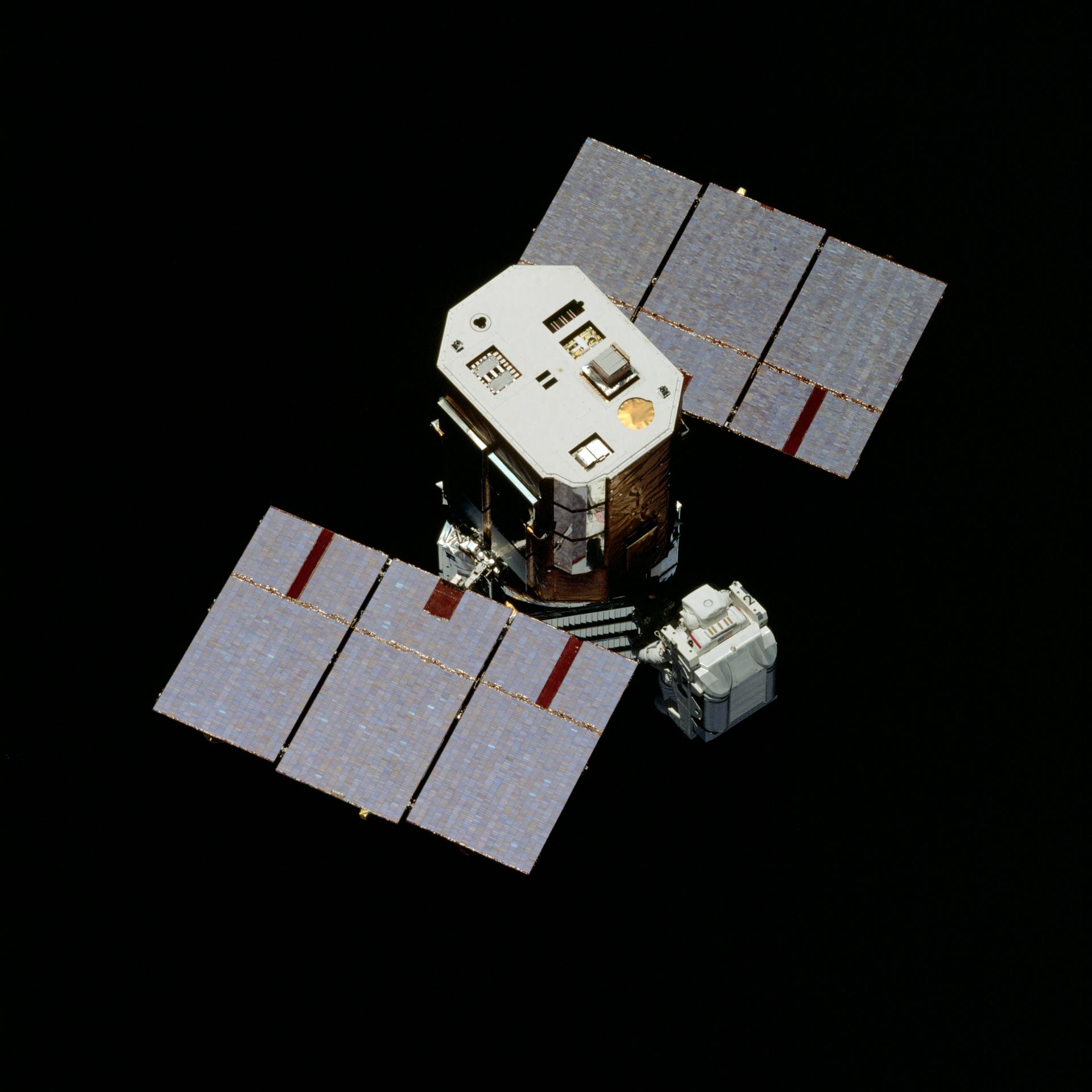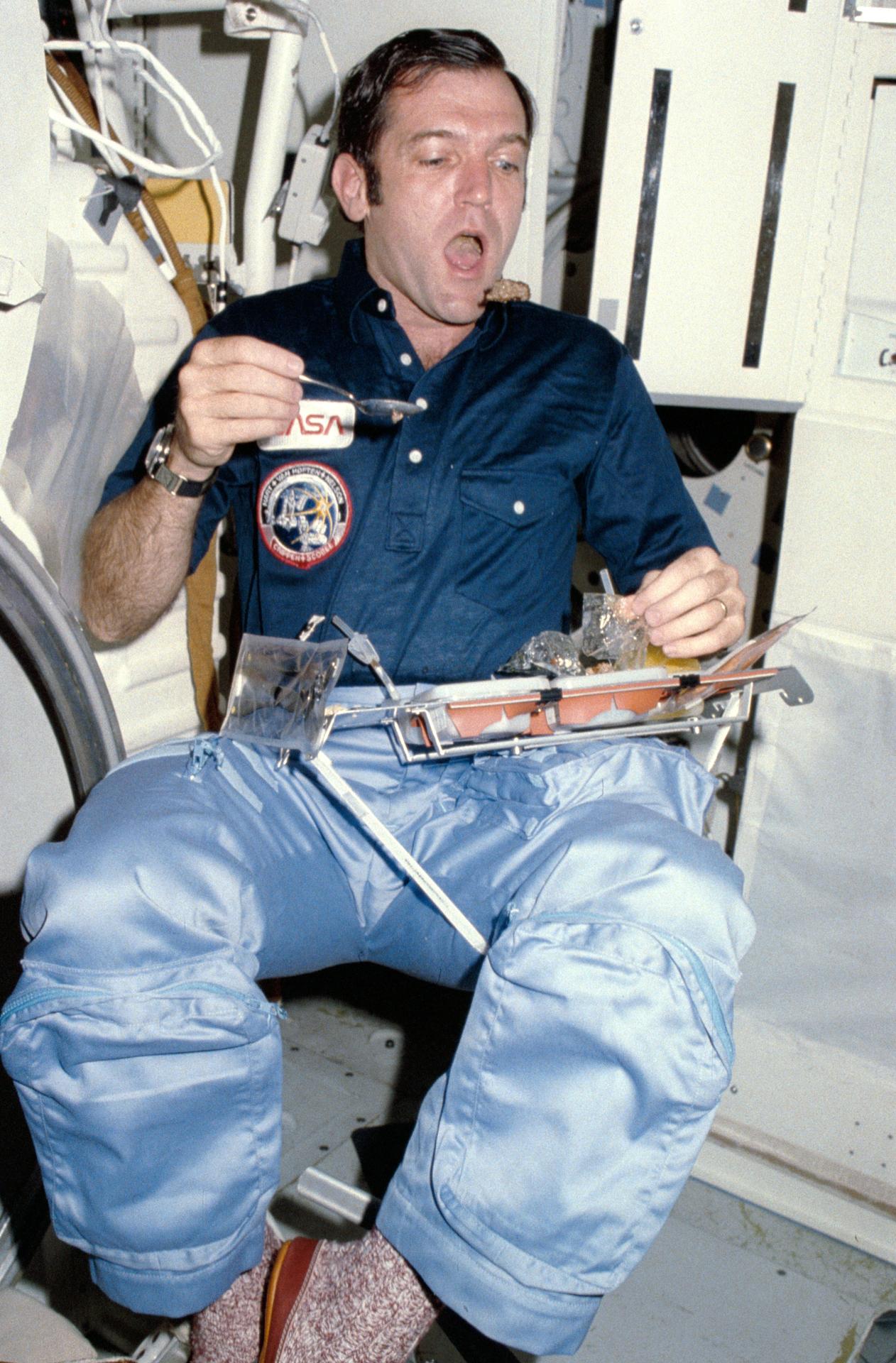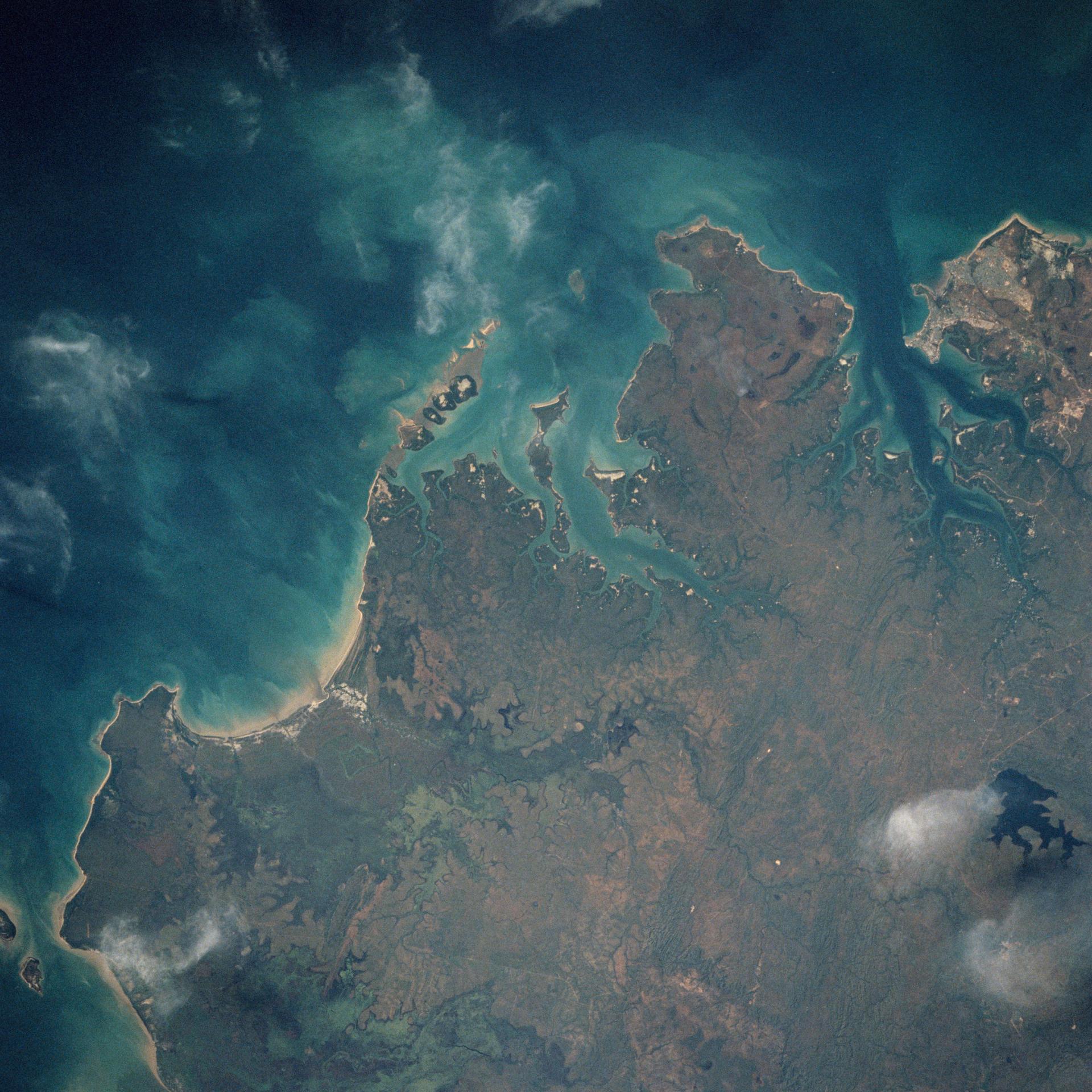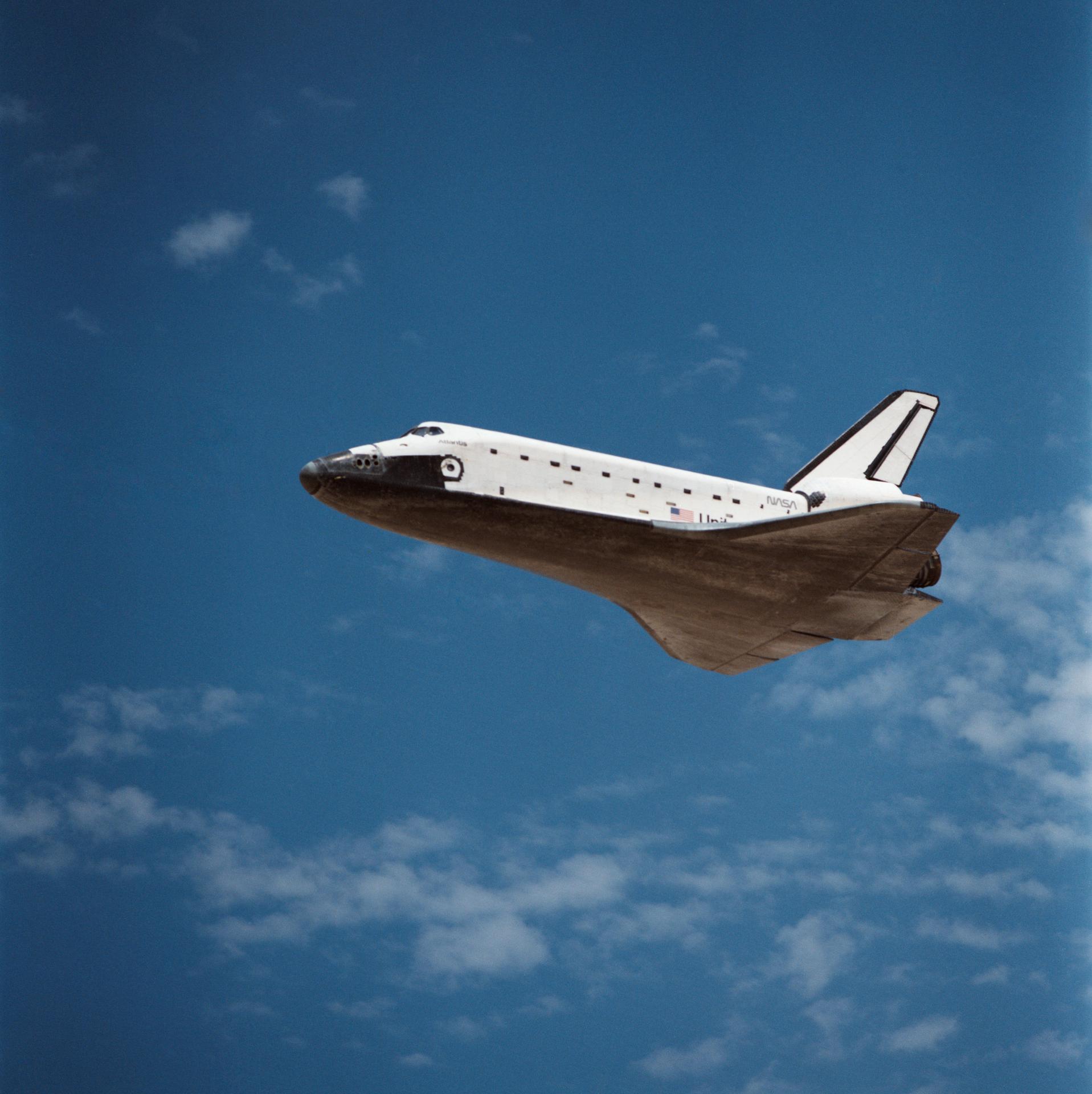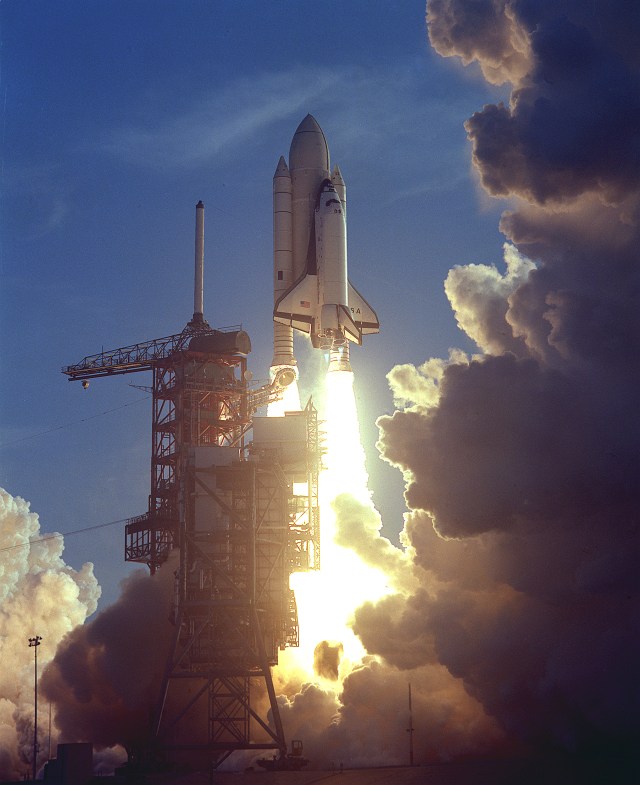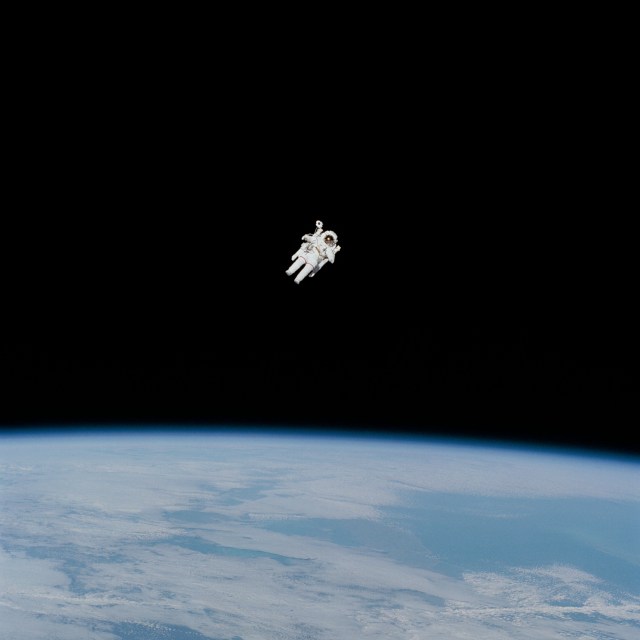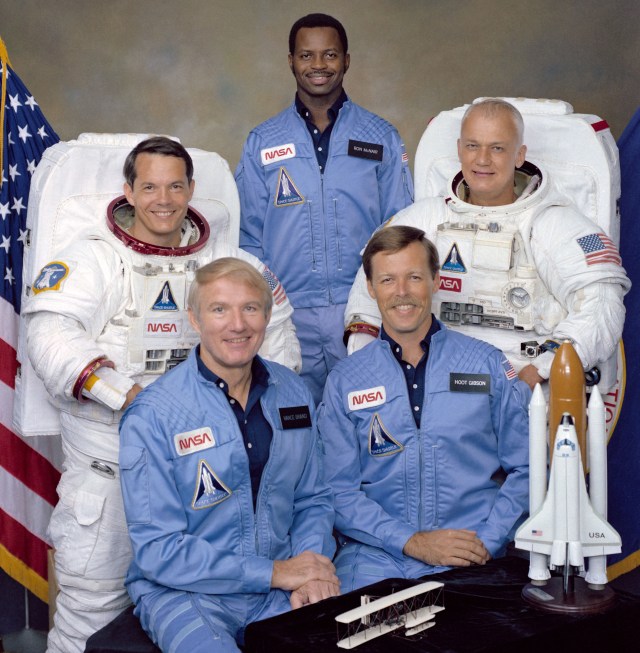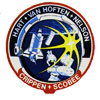
STS-41C
The primary payload of the mission was the Long Duration Exposure Facility (LDEF). Also, using the manned maneuvering unit, astronauts replaced the altitude control system and coronagraph/polarimeter electronics box in the Solar Max satellite while it remained in orbit.
Space Shuttle
mission duration
Launch
Landing
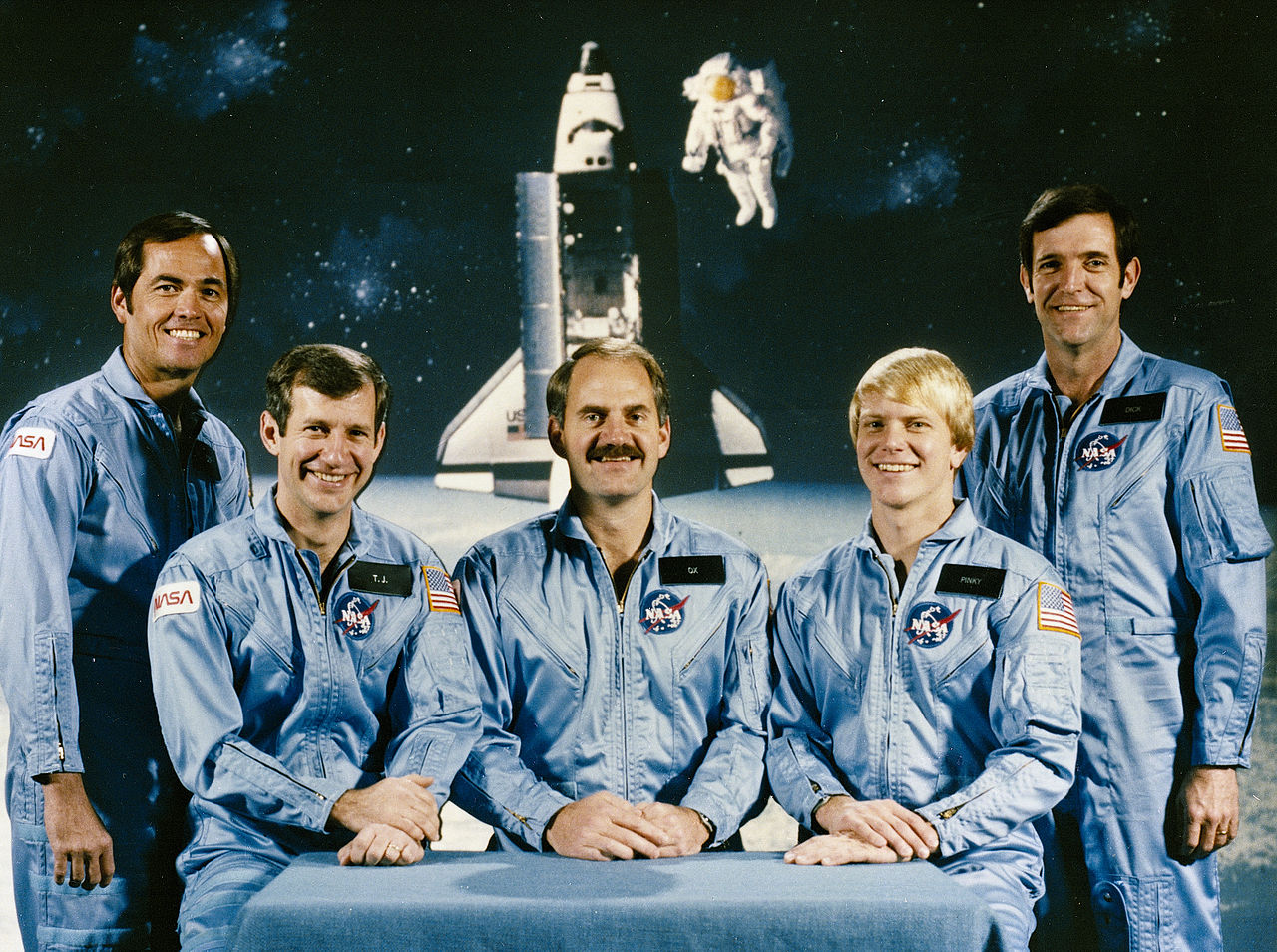
STS-41C Mission Facts
Mission: Long Duration Exposure Facility deploy, first on-orbit spacecraft repair
Space Shuttle: Challenger
Launch Pad: 39A
Launch Weight: 254,254 pounds
Launched: April 6, 1984 at 8:58:00 a.m. EST
Landing Site: Edwards Air Force Base, Calif.
Landing: April 13, 1984 at 5:38:07 a.m. PST
Landing Weight: 196,975 pounds
Runway: 17
Rollout Distance: 8,716 feet
Rollout Time: 49 seconds
Revolution: 108
Mission Duration: 6 days, 23 hours, 40 minutes, 7 seconds
Orbit Altitude: 313 nautical miles
Orbit Inclination: 28.5 degrees
Miles Traveled: 2.9 million
Crew
Robert L. Crippen, Commander
Francis R. Scobee, Pilot
George D. Nelson, Mission Specialist
James D.A. van Hoften, Mission Specialist
Terry J. Hart, Mission Specialist
Mission Highlights
The first direct ascent trajectory for space shuttle. Using the manned maneuvering unit, astronauts replaced the altitude control system and coronagraph/polarimeter electronics box in the Solar Max satellite while it remained in orbit. The Long Duration Exposure Facility (LDEF) was deployed, carrying 57 experiments which were left on orbit with an intention of retrieving them during a later mission. Other payloads on this mission were: IMAX camera; Radiation Monitoring Equipment (RME); Cinema 360; Shuttle Student Involvement Program (SSlP) experiment.
STS-41C
Shuttle News
Retired Space Shuttle Locations
Shuttle Atlantis – Kennedy Space Center Visitor Complex Shuttle Discovery – Steven F. Udvar-Hazy Center Shuttle Endeavour – California Science…
Read the Story



























